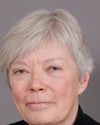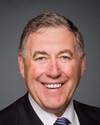We did what we've been calling a drop-off study, which we actually released and put out on our website. That study showed that we had this very high rate of applications from visible minorities, and we had a disproportionate number of hires. There was quite a dramatic drop in those. We didn't see that drop for the other groups. We didn't see it for women, we didn't see it for aboriginals, and we didn't see it for the disabled.
We are now actually taking samples from that and are looking at each stage of the recruitment process and the screening process, to see where it is that they're dropping off and why. We've taken care of some of the obvious questions, like whether they're Canadian or not. That didn't make a big impact. Now we're looking at whether it is occurring in the electronic screening part of it. Is it occurring in terms of their qualifications? Are they just not qualified? Or is it occurring at the interview? A lot of this is actually going on in the electronic screening phase, which suggests to me that we may have an institutional barrier, but we don't have a bias that somebody wilfully has put into the systems.
So we're doing that, and this is again something we're hoping will be done by the fall. As an organization we have a responsibility under the Employment Equity Act to identify barriers and then to remove those barriers, so I need a better handle on what exactly the barriers are.



